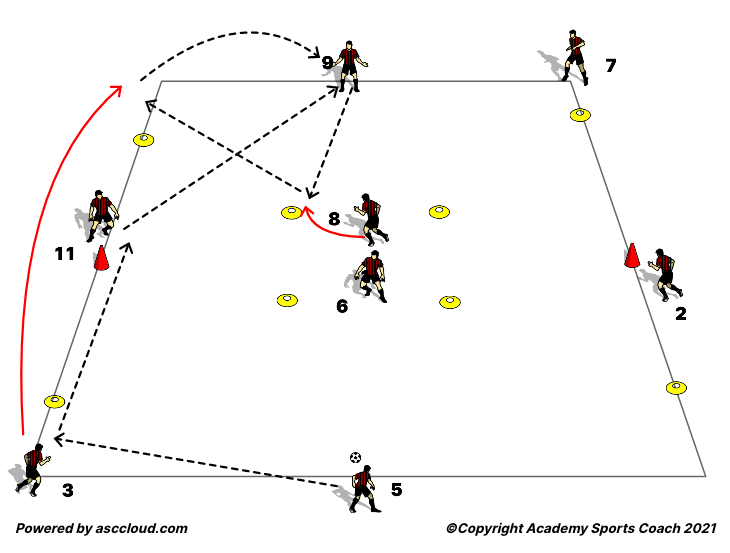Introduction
In previous articles, we introduced the 205 passing platform – a structure which can be used as the basis for developing passing patterns that translate into positional play activities.
In this article, we present a real-world example – from concept, to animated video, to execution by a team. The activity that we’ll use here is a finishing drill presented by Mark Cisneros, Men’s Head Soccer Coach at Monterey Peninsula College.
Drawing

The coach’s challenge in a passing pattern activity is to provide the cues for the players that translate to the real game:
- What part of the field are we working in?
- Where would the pressure come from?
- What sorts of passes and movements will work and which will not?
In short, for many players, we need to trigger their imagination about the game and help them find the “right” work rate, passes, and movements within the pre-determined pattern.
Animation
Execution
Putting the activity on the field, Coach Cisneros added the goals and provided verbal encouragement for players to succeed in the finishing touch. As a staff, we discussed with the players – individually and collectively – the requirements of the game and what needed to happen in the pattern in order to translate to the game.
In this version of the activity, the team is going in one direction (from right-to-left) – the activity could easily be modified to have the game go in both directions.
The video below expands on the coaching points and has stop frames illustrating key moments in the pattern.
We could add progressions from this pattern – place defenders in specific positions (such as the checking run from the 9, a challenge to the 8), then move to a small-sided game with wide neutrals and central neutrals with goals scored on crosses.
Summary
Passing patterns can form an important part of developing positional play in real games – when implemented within the larger framework of game requirements and a style/system of play.
The 205 activities library contains a variety of passing pattern activities that can be used as a basis to develop positional play in different game situations.